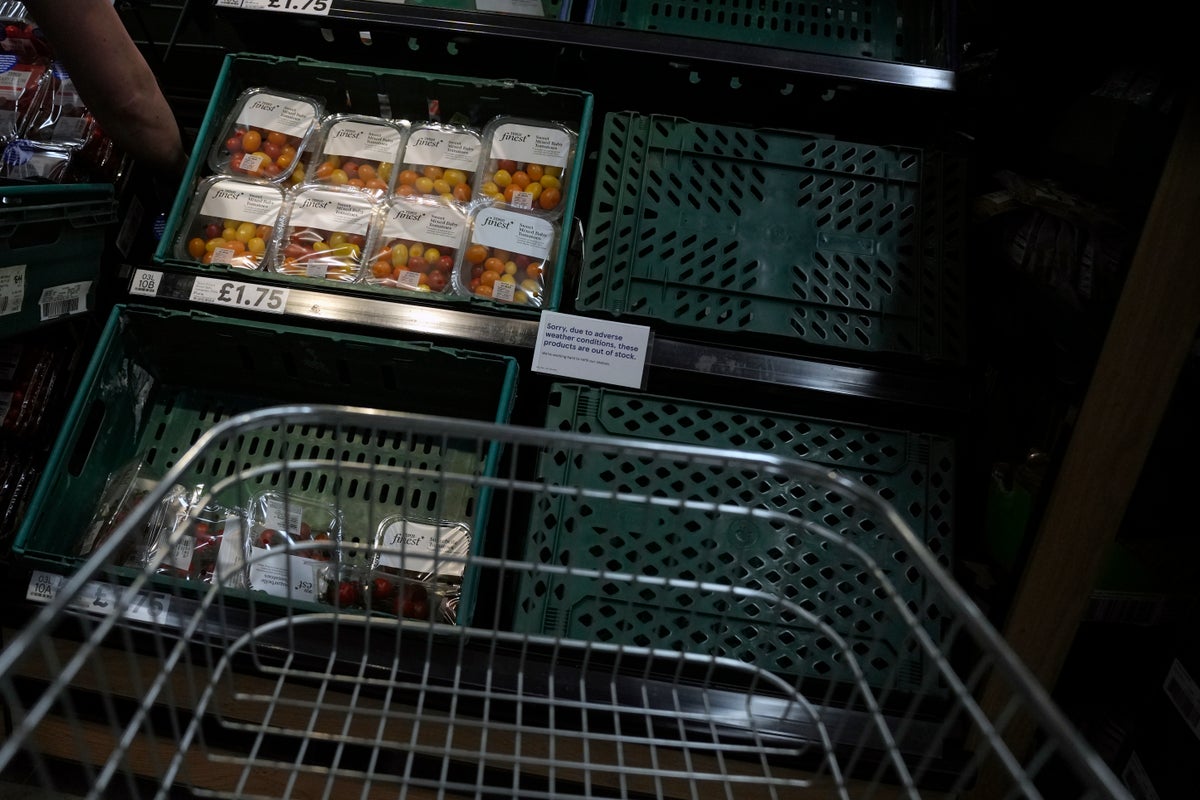
Something unexpected may force the Bank of England to approve an 11th consecutive interest rate increase Thursday: a shortage of fresh vegetables.
The scramble for peppers, cucumbers and spinach last month helped push inflation to 10.4% in February, surprising analysts who expected prices to drop into single digits for the first time in seven months.
Before the numbers were released Wednesday, many economists suggested the Bank of England would keep rates on hold. That's because of concern about turmoil in the global financial system following the collapse of two U.S. banks and the ensuing troubles at Switzerland's Credit Suisse, which forced a hastily arranged takeover by rival UBS.
But the unexpected jump in prices in the United Kingdom refocused attention on stubbornly high inflation that is pummeling consumers and slowing economic growth.
Investors are now betting the central bank will raise its key rate by a quarter of a percentage point, to 4.25%.
“After two weeks of instability on financial markets, there had been growing expectation that the Bank of England may take a pause in its rate hike journey, and that can’t be ruled out,” said Danni Hewson, head of financial analysis at financial services company AJ Bell. “But (Wednesday’s) upward shift will be akin to popping a rooster into the henhouse.’’
The U.S. Federal Reserve weighed in with its assessment of the risks Wednesday, raising its key interest rate by a quarter-point as Fed Chair Jerome Powell tried to reassure Americans that it is safe to leave money in their banks. A week ago, the European Central Bank hiked rates by a large half-point, brushing aside the financial market jitters and calling Europe’s banking sector resilient.
Central bankers worldwide are struggling to balance competing economic demands as they try to rein in inflation, which erodes savings and increases costs for consumers and businesses, without unnecessarily damaging economies weakened by the COVID-19 pandemic, Russia's war in Ukraine and now banking upheaval.
But U.K. policymakers are facing a different situation than their American counterparts.
Inflation has proved to be more stubborn in Britain than the U.S., partly because it has been more exposed to the jump in natural gas prices triggered by Russia’s invasion of Ukraine. It's even more affected than mainland Europe, which got through the winter heating season largely without Russian supplies of natural gas and has a lower inflation rate of 8.5% in the 20-country euro area.
The gas crunch took an unexpectedly big toll in February, when the high price of energy needed to heat greenhouses, combined with bad weather in southern Europe and Africa, contributed to an 18% jump in food prices, the biggest increase in 45 years.
The Bank of England and the government have been focused on trying to prevent those cost pressures from becoming embedded in the economy, driving up wages and further fueling inflation.
The February inflation figures came as a “crushing blow” for Britain's central bank, said Craig Erlam, a senior market analyst for foreign exchange trader OANDA. Concerns about the banking crisis no longer justify keeping rates on hold, he said.
“Whatever flexibility the Bank of England may have thought it would have on Thursday was wiped out by Wednesday morning’s inflation data, and once more the topic of conversation has shifted to whether 0.25 percentage points will be enough,” Erlam said.
But others aren’t so sure.
Investec Economics predicted the Bank of England would opt for a “wait-and-see approach,” keeping rates at 4% while it weighs the fallout from the banking crisis.
The central bank "will have to assess which is the lesser of two evils: the risk of inflation being higher for longer or the current threat to financial stability stemming from the rapidly evolving fears of a banking crisis,” said Ellie Henderson, an Investec economist.







